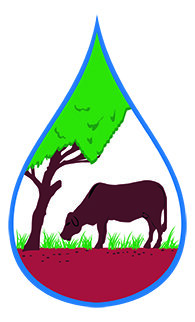Pasture: How to know if you have enough grass?
Each year it rains to some degree of certainty in the Burdekin Catchment, grasses and legumes grow, providing forage for our cattle to eat. The amount of plant growth depends on the seasonal rain each year producing usable biomass for stock feed. In good years you can have a substantial biomass. In ordinary years with a few patchy storms your biomass can be quite variable across your property and even between paddocks. These plants go through various growth stages which are influenced by moisture, temperature, and soil fertility. These factors impact how much forage biomass is produced and vary according to species.
Cattle graze on the best, these preferred species are high in nutrition and energy and are selected first from the paddock before other species. Available forage and the number of grazing mouths will determine how much pasture is left until the next rain event, for us around January-April each year.
Retaining pasture cover at the end of the dry season will protect the soil from wind and water erosion. This cover allows us to catch the most rainfall as possible to regenerate plant growth and recharge the under-ground water system.
Your paddocks and available pastures are the product of how they have been grazed in the past. How you manage your grazing stock will determine what your pasture looks like in the future.
Graziers caught up this month for a forage budgeting training workshop at Ravenswood and Mt Owenee Station. Attendees spent the day learning about the tools available to adjust stocking rates to meet current feed supply of grazing animals. Understanding land types on individual properties is an initial benchmark for stocking rates in the Upper Burdekin.
Our forage budgeting service is available free of charge to graziers in the Upper Burdekin. The service has a peer grazier arrive at your property to guide you through forage budgeting on your property discussing all things grass, land type and production capabilities.
Points to Remember
Forage budgeting isn’t a one and done plan set in stone. It it’s a bank account in the paddock and needs careful planning and management for growth.
Understand the season, practice, monitor, re-plan, practice, monitor, re-plan.
A proactive approach to grazing management focuses on eliminating problems before they have a chance to appear whereas a reactive approach is based on responding to events after they have happened. Managing for the upcoming season is best tackled early when more options are available at hand.
To register for the free forage budgeting service contact:
Heather Jonsson coordinator@dalrymplelandcare.org.au




